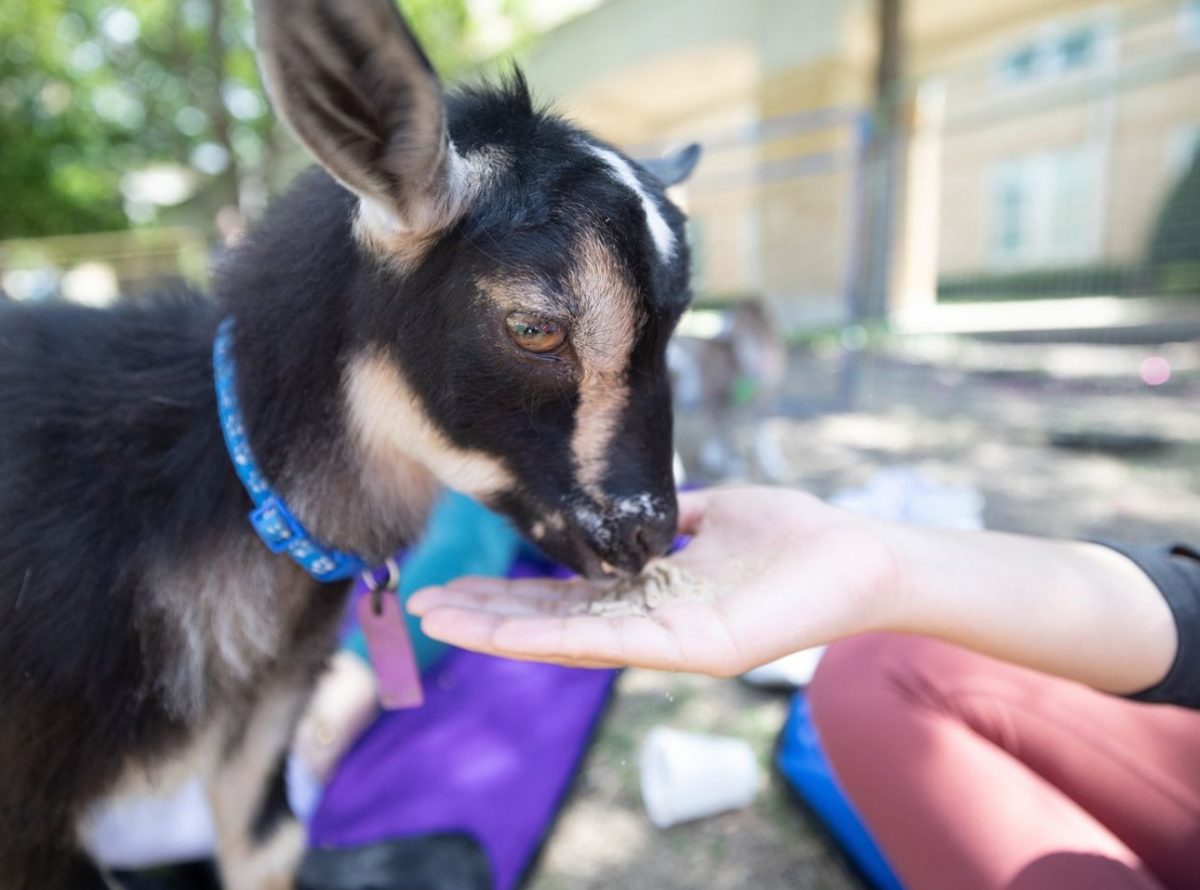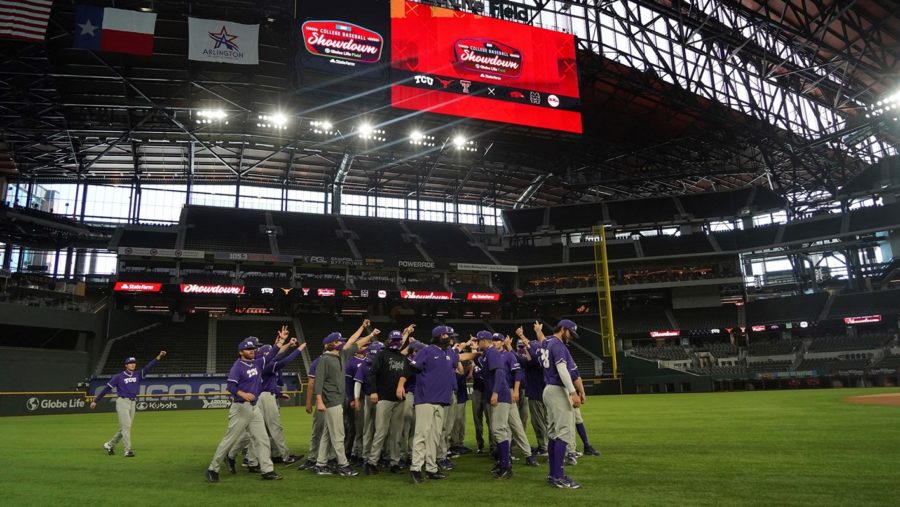TCU head baseball coach Jim Schlossnagle isn’t Billy Beane.
But he’s working with a “Moneyball” budget — his funds are limited.
So goes the story of a scholarship-strapped college baseball coach, especially one like Schlossnagle, who is tasked with juggling a limited number of scholarships and doing it at a private school.
Not only are NCAA Division I baseball teams allotted 11.7 total scholarships to fill out an entire team, they also are told exactly how to distribute them.
According to NCAA bylaws, only 27 players on each team can be awarded scholarship money and those that do must receive at least 25 percent of a full one.
This has forced Schlossnagle to mix and match his dollars with a focus on giving more money to the recruits who need it most.
“If we see a great player whose family has money, we certainly ask them to understand that we’re trying to work with under what is really a salary cap and know that if they want to be on a good team, then every thousand dollars we give them is a thousand dollars less we can give someone else,” Schlossnagle said.
But TCU’s scholarship hurdles might have been caused by a problem the university had nothing to do with.
Chad Tolliver, NCAA Coordinator for Baseball, said the distribution limit rule was created to bring up the sport’s slipping Academic Progress Rate, a number that measures each athlete’s progress toward graduation.
“It was part of an APR review package that was aimed at helping college baseball — Division I baseball in particular — improve their APR across the board,” Tolliver said.
And the system has worked.
Tolliver said baseball’s APR ratings have gone up, and, according to a report issued by the NCAA last May, the sport’s average APR for the four years from 2006-07 to 2009-10 was 959, higher than both men’s basketball (945) and football (946).
TCU’s problem stems from the fact that its APR scores were never that low.
When the new rules were announced in 2007, TCU had an APR of 962 for 2007-08, well above the NCAA target score of 925.
Since then, that number has only gotten higher, jumping to 971 in 2008-2009 and staying at 970 in 2009-2010, the last time APR scores were reported.
Either way, student-athletes have to cover the difference, something easier said than done at a private school like TCU, where the total annual cost is estimated at $43,860, according to the university’s website.
Tuition at powerhouse public school programs, like University of Texas and Oklahoma State University, is about a third of what it is at TCU, putting the Frogs at a disadvantage.
“It’s a challenge at every school, but it’s a real challenge at a private school because we’re dealing in partial scholarships, and obviously our denominator is much larger than a state school’s denominator,” Schlossnagle said.
TCU will have the highest tuition rates in the Big 12 next year — that means coming to TCU is a financial sacrifice most players would not have to make elsewhere.
“Pretty much every player on our team is paying much more, if not significantly more, to come to TCU than they would have to go to other places,” Schlossnagle said.
Because of this, Schlossnagle has been forced to find players who are not only talented, but also financially stable — willing to pay thousands of dollars to cover what their scholarships do not.
“That makes it really tough to find a guy that’s a really good player, who’s a really good student who can afford to come to school here and also won’t sign a pro contract,” Schlossnagle said.
Schlossnagle has been fortunate enough to find a few, though.
Center fielder Jason Coats, who set the single-season school hit record in 2010, and third baseman Jantzen Witte both came to TCU as walk-ons, Schlossnagle said.
But finding the Coatses and Wittes of the world — impact players who also save their team money — is rare. Sometimes TCU recruits them, and sometimes they recruit TCU. Still, Schlossnagle said there’s no go-to route when it comes to finding the player who’s good enough and affordable, too.
“We certainly have preferred walk-ons where we see a guy play, and we can make it affordable for him by way of academic aid or need-based aid; or his family can afford to come, and we promise him a spot on the team,” Schlossnagle said. “And there’s the guys that just show up to walk-on tryouts and find their way on the team. There’s a variety of ways to do it, but the good, non-scholarship player is hard to find.”





